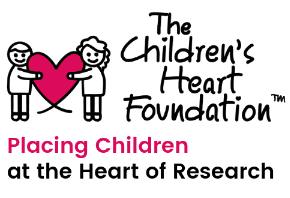Spring is in the Air
Spring is in the Air
Spring is in the Air – March is here, and the beginning of Spring comes with it. Spring brings enjoyable weather, blooming flowers, green grass, and outdoor activities. Alas, that means more POLLEN – Sneezing – Allergies.
Flora, a child of six, loves flowers and outdoor play, but she often gets a runny nose, bouts of sneezing, and an itchy nose with a cough. This happens every year during the Spring and lasts into the summer. It improves when the weather gets cool. She coughs all night and sometimes has a wheeze. She is constantly wiping her nose and has darkened areas under her eyes.
Flora has many of the symptoms of allergic rhinitis or allergies.
What is allergic rhinitis or allergies?
Allergic rhinitis, or allergic rhinosinusitis, presents with attacks of sneezing, runny nose, stuffy nose, mouth breathing, and can have itchy eyes, nose, and mouth palate. Also frequent are postnasal drip, cough, irritability, and fatigue. It is a widespread complaint affecting 10 to 30 percent of children and adults.
Signs and symptoms:
- Sneezing
- Rhinorrhea – runny nose.
- Nasal obstruction – nasal congestion
- Nasal itching.
- Postnasal drip.
- Cough.
- Irritability
- Fatigue.
- Itching of ears or palate
- Itching, burning, tearing of the eye
- Snorting, sniffing, and clearing throat frequently
Classifications:
Seasonal
Occurs at a particular time of the year. Seasonal allergy rhinitis is usually caused by pollen from trees, grasses, weeds, hay, weed pollens, or mold. Symptoms of seasonal allergic rhinitis are predictable and reproducible from year to year.
Perennial
Present year-round. Allergens like dust mites, cockroaches, mold spores, or animal dander trigger perennial allergic rhinitis. Perennial symptoms are also seen with occupational allergen exposure.
Nonallergic forms of rhinitis
Vasomotor, pregnancy, Afrin medication overuse) can be triggered by changes in weather and temperature—increased blood as in pregnancy or from overuse of nasal sprays.
Occupational:
Latex, plant products (e.g., baking flour), sensitizing chemicals, and certain animals for people working in farms and vet clinics
Allergic Rhinitis Physical findings
Patients may present with the following:
- “Allergic Shiners,” swelling under the eyes with darkening.

- “Dennie-Morgan” lines folds or wrinkles below the lower lids.

- “Allergic Salute” wrinkle on the nose caused by repeated rubbing and pushing the nose tip up with the hand.

- Allergic conjunctivitis – swelling of eyelids with itching, tearing, redness, burning, and sensitivity to light. Symptoms are usually bilateral.
- Sinusitis – allergies cause nasal mucosa to swell, leading to sinus infection.
- Asthma – Children often present with cough and wheeze, more prominent with exertion.
- Atopic dermatitis (eczema) – dry, itchy, flaking skin

- Other conditions – eustachian tube dysfunction, serous, and acute otitis media. Nasal obstruction can also cause sleep-disordered breathing and lack of smell.
General Prevention
- Breastfeeding to 6 months lowers the risk of some atopic disorders.
- Symptomatic control by environmental avoidance is the “first-line treatment.”
- Air conditioning and limited outside exposure during allergy season
- HEPA air cleaners
- Close doors and windows during allergy season.
- Use a dehumidifier to reduce indoor humidity.
Flora had many of these symptoms. There are multiple choices for treatment, and these should be discussed with your doctor.
If you are interested, many of the above have figures and pictures on the web. Until next month enjoy the flowering spring.



